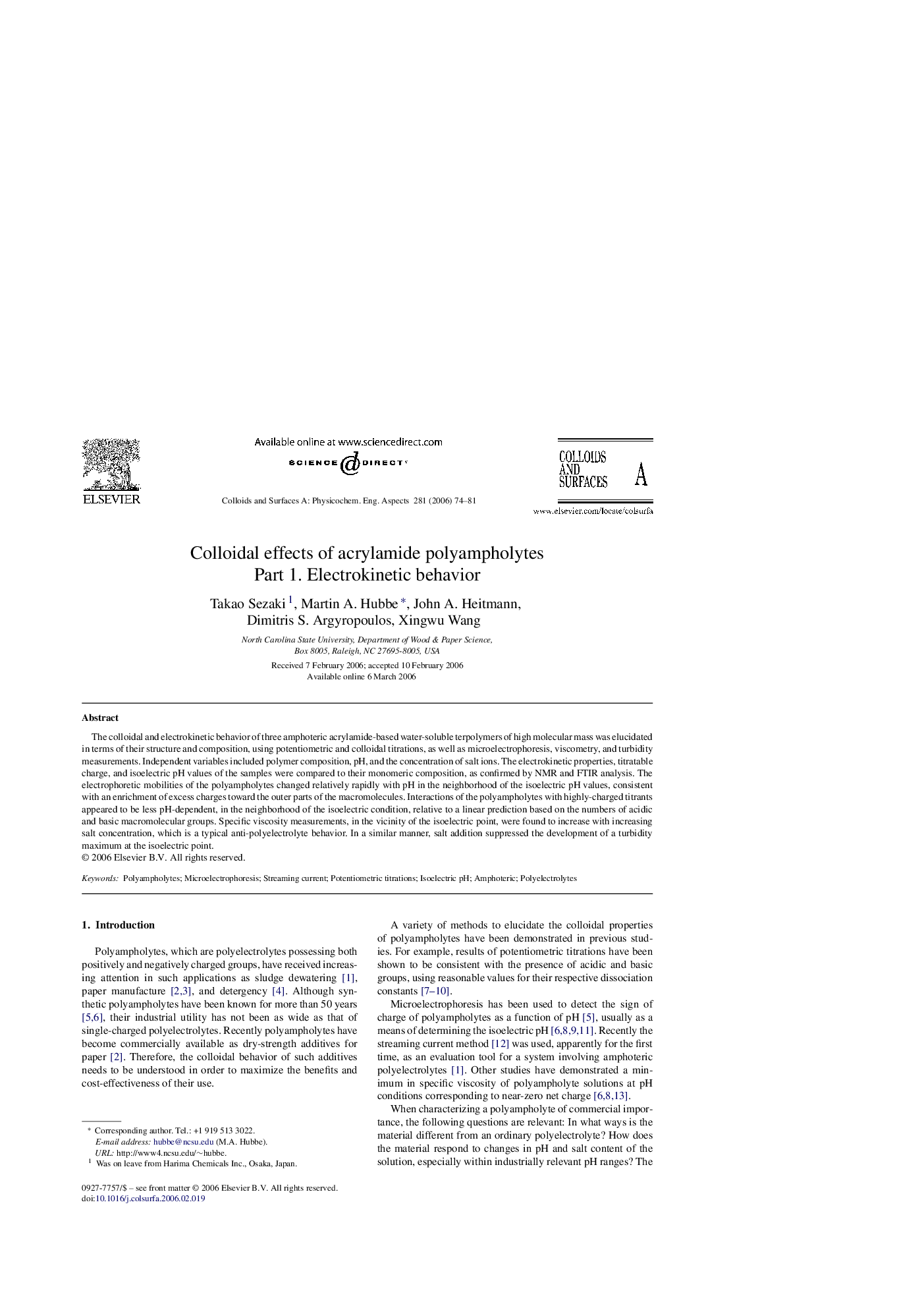| Article ID | Journal | Published Year | Pages | File Type |
|---|---|---|---|---|
| 598175 | Colloids and Surfaces A: Physicochemical and Engineering Aspects | 2006 | 8 Pages |
The colloidal and electrokinetic behavior of three amphoteric acrylamide-based water-soluble terpolymers of high molecular mass was elucidated in terms of their structure and composition, using potentiometric and colloidal titrations, as well as microelectrophoresis, viscometry, and turbidity measurements. Independent variables included polymer composition, pH, and the concentration of salt ions. The electrokinetic properties, titratable charge, and isoelectric pH values of the samples were compared to their monomeric composition, as confirmed by NMR and FTIR analysis. The electrophoretic mobilities of the polyampholytes changed relatively rapidly with pH in the neighborhood of the isoelectric pH values, consistent with an enrichment of excess charges toward the outer parts of the macromolecules. Interactions of the polyampholytes with highly-charged titrants appeared to be less pH-dependent, in the neighborhood of the isoelectric condition, relative to a linear prediction based on the numbers of acidic and basic macromolecular groups. Specific viscosity measurements, in the vicinity of the isoelectric point, were found to increase with increasing salt concentration, which is a typical anti-polyelectrolyte behavior. In a similar manner, salt addition suppressed the development of a turbidity maximum at the isoelectric point.
